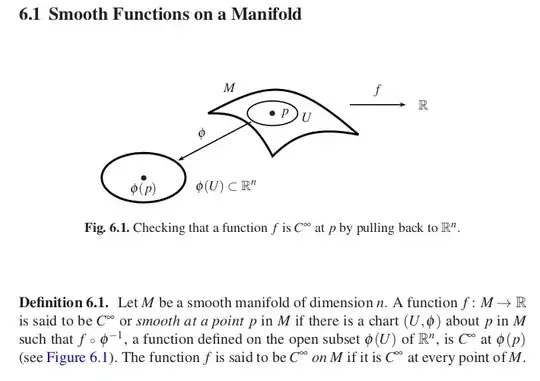I have a question about the definition of smooth function defined on a manifold, as described in An Introduction to Manifolds by Loring W. Tu. In the book is the following definition:
So if we set $M=\Re$, $p=0$ and $U=(-1, 1)$. Pick $f = x/2$ when $x \lt 0$, $f = x$ when $x \ge 0$. Then if we define $\phi = f$, we obtain $f \circ \phi^{-1}= 1$. I believe the choice of $\phi$ is valid, as is a homeomorphism.
According to the definition, since $f \circ \phi^{-1}$ is smooth, then $f$ is smooth. But clearly $f$ is not smooth!
Please can someone clarify where my understanding is wrong?
=== Edit: an error in my original question, I have made a change such that now we have $\phi=f$, which yields $f \circ \phi^{-1}=1$, as required. (Previously I had $\phi=f^{-1}$). This doesn’t change the nature of the question, but felt I should explain as obviously will affect the reading of any answers given. Answers have now been provided, and thanks all for helping.
